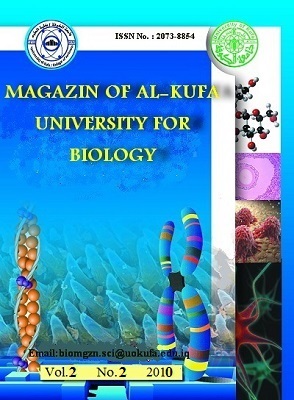Control of Salmonella Spp isolated from Garmat Ali sewage by superoxide radicals produced in vitro.
Abstract
A modified method was used in the present study to generate superoxide radicals (O2.-) in vitro, the method involves exposing of riboflavin to lighting and generate O2.-. Salmonella Spp was isolated from sewage of Garmat Ali region in Basrah city, Iraq. This study aimed to reduced Salmonella Spp by submitted it to superoxide radicals. A significant reduction in the number of bacteria was revealed after exposed to superoxide radicals at (10, 20, 30, 40 and 50) µg/mL of riboflavin for 10 min of lighting with fluorescent lamp ( 40 watt ), as well as the reduction in bacteria number was observed when the bacteria was exposed to superoxide radicals at 30µg/mL of riboflavin for intervals (5, 10, 15, 20, 25 and 30) min of lighting with fluorescent lamp. This study suggesting that reduction in bacteria number was increased as increased riboflavin concentration or increased lighting time.Downloads
Downloads
Published
How to Cite
Issue
Section
License
Copyright (c) 2013 Rafid M. Karim, Ghazi M. Al-Maleky, Ahmed J. Shabeeb

This work is licensed under a Creative Commons Attribution 4.0 International License.
which allows users to copy, create extracts, abstracts, and new works from the Article, alter and revise the Article, and make commercial use of the Article (including reuse and/or resale of the Article by commercial entities), provided the user gives appropriate credit (with a link to the formal publication through the relevant DOI), provides a link to the license, indicates if changes were made and the licensor is not represented as endorsing the use made of the work.












